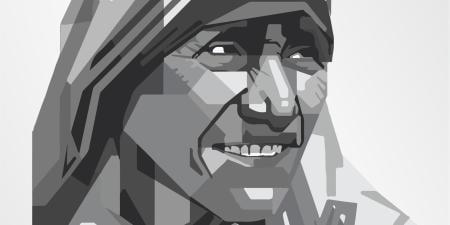A 40-year-old carpenter, husband and father of four teenage children, falls from a ladder at work and sustains severe head injury. Treatment during his hospitalization includes intubation and mechanical ventilation for airway protection and surgery to relieve pressure on his brain that formed as a result of a subdural hematoma. Doctors also insert a gastric tube for artificial nutrition. As he recovers in a rehabilitation facility, he is able to breathe again without the need for a ventilator. He opens his eyes and looks around the room. He assumes a near-normal sleep and wake cycle and occasionally makes some vocal sounds that do not seem to be meaningful. He is not able to eat by himself and aspirates food if it is put into his mouth. After six months of this marginal recovery, he is declared by a neurologist to be in a persistent vegetative state (PVS), and the family begins to wonder about his future. They reluctantly ponder the idea of withholding artificial nutrition, stating that he would not want to live this way.
The story of Terri Schiavo and her husband's pursuit of the right to remove her feeding tube sparked public debate and much individual introspection on the subject of withholding artificial nutrition in patients with PVS. Then U.S. Senate majority leader and renowned heart surgeon William Frist went on record questioning the opinion of several neurologists who had declared that Mrs. Schiavo was in a PVS "based on a review of the video footage which I spent an hour or so looking at last night in my office" [1]. A clearer understanding of the diagnostic criteria for PVS is needed, for both the medical community and the lay public, as we ponder this issue. The open eyes and presence of autonomic function can be both confusing and bothersome for families and health care personnel and can lead to false expectations and flawed decisions.
The term PVS was introduced in 1972 by Scottish neurosurgeon Bryan Jennett and American neurologist Fred Plum [2]. The choice of the word "vegetative" was purposeful and meant to emphasize the fact that such a person is organically alive but lacking in intellectual activity or sensation. Secondly, it was chosen because it is a term that families of those stricken with the condition can understand. The unfortunate use of the term "vegetable" when referring to such patients has called into question the appropriateness of the designation PVS when describing this condition.
PVS results from injury to the brain after interruption of the blood supply (anoxic brain injury), with infection to the central nervous system (as in encephalitis) or after severe head trauma. The patient retains autonomic and brainstem function but lacks the ability to receive sensory input or to communicate. Sleep and wake patterns often return to normal; eyes are usually open, and a patient may make grimacing movements or grunting noises. A diagnosis of PVS is appropriately withheld until at least one month after the impairment of consciousness.
In 1994 the New England Journal of Medicine published the consensus reports of a task force that had been charged with determining the clinical criteria for diagnosing PVS [3,4]. The clinical criteria are:
- No evidence of awareness of self or environment; no interaction with others.
- No evidence of sustained, reproducible, purposeful or voluntary behavioral responses to visual, auditory, tactile or noxious stimuli.
- No evidence of language comprehension or expression.
- Return of sleep-wake cycles, arousal, even smiling, frowning, yawning.
- Sufficient hypothalamic and brainstem autonomic functions to survive if given medical or nursing care.
- Bowel and bladder incontinence.
- Variably preserved cranial nerve and spinal reflexes.
PVS must be differentiated from other disorders of prolonged impairment of consciousness, such as minimally conscious state, akinetic mutism, locked-in syndrome and brain death. The usual investigations done during an evaluation of PVS are an electroencephalogram (EEG), brain imaging such as MRI or CT, and perhaps PET scanning. Most important, however, in the evaluation is the patient's history—including as clear an understanding as possible of the initial insult—and a physical exam by a neurologist.
Management of patients with PVS usually includes temporary tracheostomy and percutaneous feeding tube placement, since patients are unable to eat normally. Decisions by families to consider withholding or withdrawing care often come months or even years after the trauma. By that time, since autonomic function is relatively normal and there is no longer a need for artificial respiration, artificial nutrition and hydration are all that are left to withhold. At that point, families who have accepted that the condition is indeed irreversible generally rely on moral and religious authorities and known patient preferences to guide their decisions.
References
-
Babington C. Viewing videotape, Frist disputes Fla. doctors' diagnosis of Schiavo. Washington Post. March 19, 2005:A15. http://www.washingtonpost.com/wp-dyn/articles/A48119-2005Mar18.html. Accessed April 17, 2007.
- Jennett B, Plum F. Persistent vegetative state after brain damage. A syndrome in search of a name. Lancet. 1972;1(7753):734-737.
- The Multi-Society Task Force on PVS. Medical aspects of the persistent vegetative state—first of two parts. N Engl J Med. 1994;330(21):1499-1508.
- The Multi-Society Task Force on PVS. Medical aspects of the persistent vegetative state—second of two parts. N Engl J Med. 1994;330(22):1572-1579.



